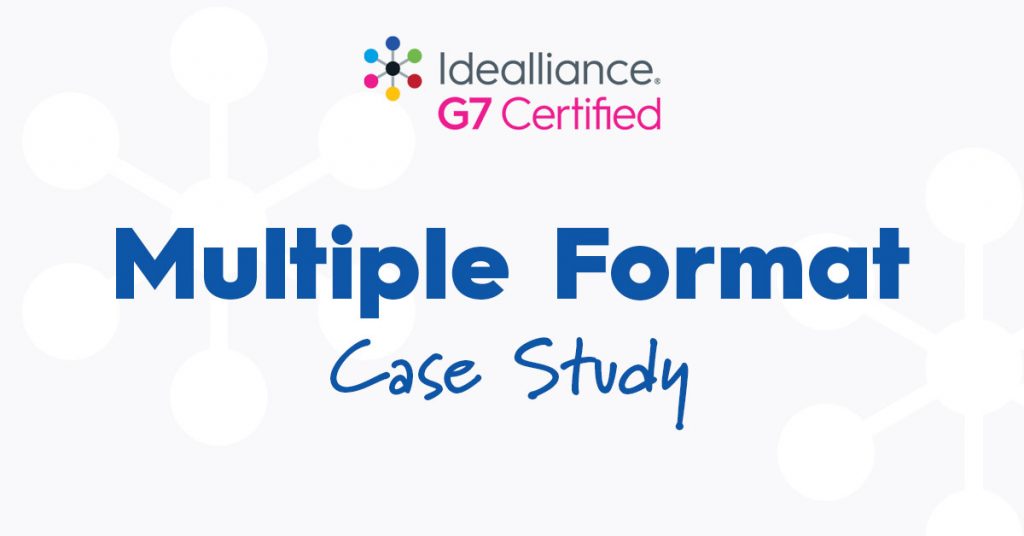Multiple Format G7® Case Study

Hopkins Printing | G7® Case Study
Adopting G7 allowed a full-service commercial printer to provide consistent color matching of proofs and final output on multiple devices. This reliability factor dramatically reduced color-related disputes and improved client satisfaction.
For the past 40 years, Columbus, Ohio-based Hopkins Printing has been the quintessential “local printer”—with a big-picture approach to solving the communication needs of over 350 regional clients. It offers a full range of commercial printing services, including five Heidelberg sheet-fed color offset presses, as well as digital, wide-format, and grand-format color devices. It also provides mailing and related data management, as well as a web2print storefront and email marketing services.
President Roy Waterhouse stresses the importance of consistency as a key to winning and retaining business. “We have found by delivering a consistent product with above average service that we can grow our business,” he said. “By having consistent print, we are able to consistently satisfy our customers.”
For Waterhouse, such consistency is especially important when it comes to color. “Many of our customers are verticals like retail, banking, agencies, hospitals and insurance,” he noted. “These consumer-facing brands have a strong need for consistent color. They also expect consistency across offset, digital, and wide-format.” The majority of Hopkins clients supply PDF files, which are processed in an Agfa Apogee workflow—with hardcopy or PDF proofs supplied before plates are made. At the proofing stage, color matching is essential.
“The benefit of G7 is more trust between sales, production and customers.”
The Importance of G7
To reduce make-ready and color discrepancies across its fleet of output devices, Hopkins began to implement G7 methodology in 2009. Hiring a G7 Expert consultant, the company was qualified as a G7 Master printer—and has remained so ever since.
“By basing our approach on gray balance, we have experienced an easier time getting to color and holding color,” Waterhouse said. “This has resulted in fewer press OK’s because our customers trust that we can hit our proofs. It has also reduced the amount of hard proofs we send out. Customers are more confident that our sheets will look good, so they are more comfortable with PDF proofs.”
Ongoing operational costs are also affected. “By using G7, we have been able to reduce our make-ready time,” he said. “We are just running to the numbers and then trusting the numbers to produce the results. With our proofs and our press sheets matching closer we are also not running a wide range of densities—which is hard to run consistently.”
Cost savings from make-ready reduction is only part of the G7 benefit. “The benefit is more trust between sales, production and customers,” Waterhouse noted. “Because we are more consistent, there are fewer customer issues. This means we are selling and producing great product instead of spending time with customers working on complaints.”
Why Did You Choose to Implement G7?
If you are a G7 Master Certified Facility, we’d love to hear from you!
INTERESTED IN BECOMING A G7 EXPERT?
Contact Jordan Gorski, Executive Director, to explore G7 training & implementing G7 into your print production for visual consistency and optimized color print production. jgorski@idealliance.org | 703.837.1096
